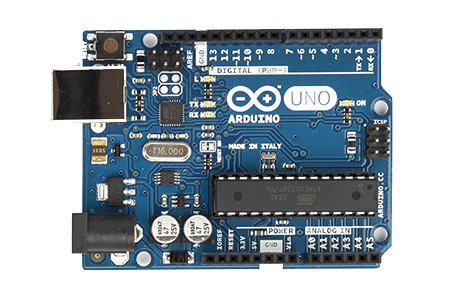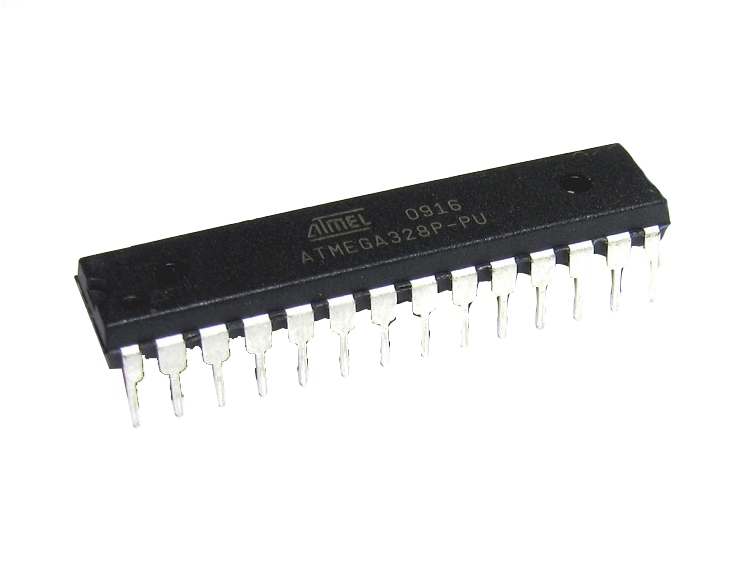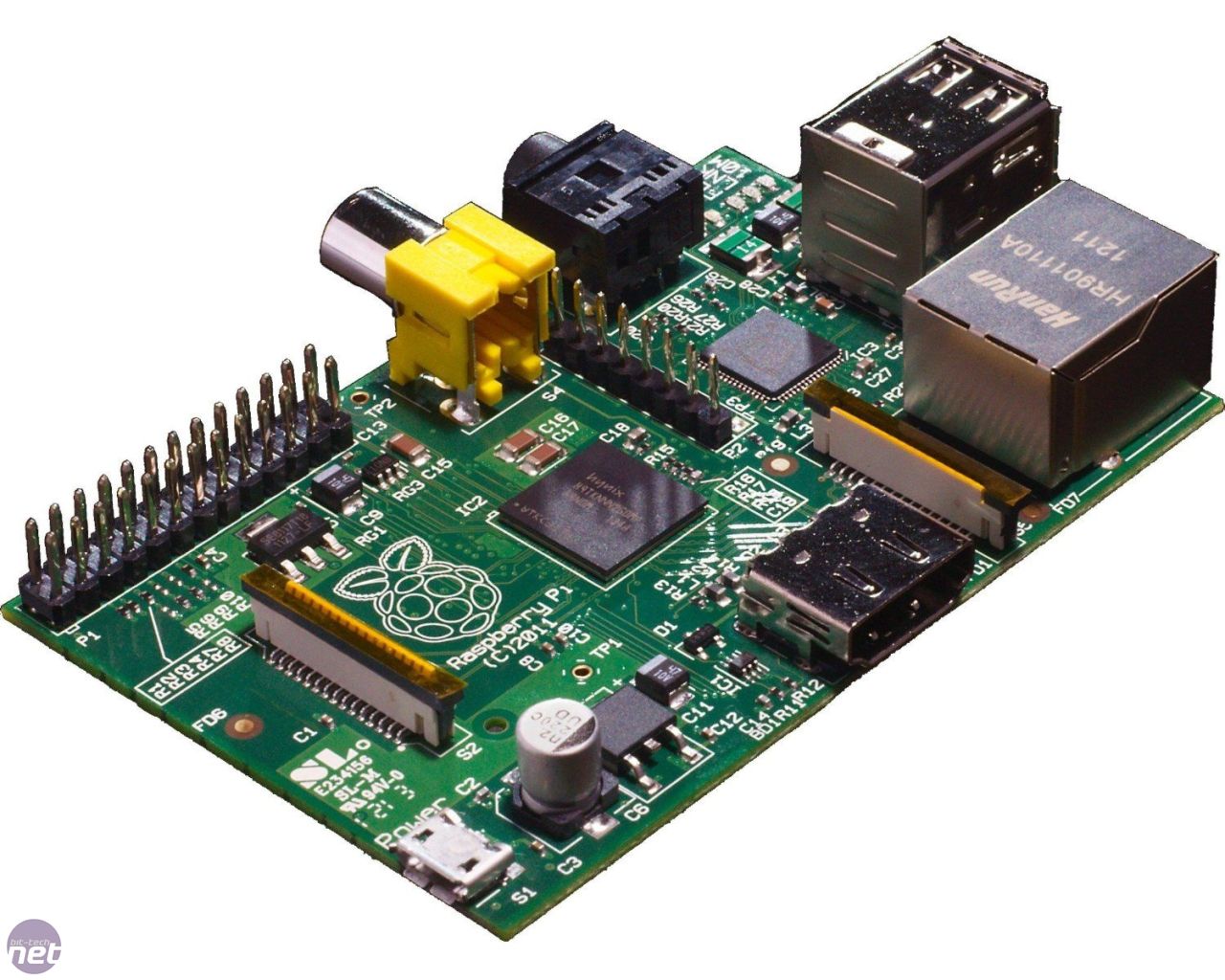Arduino
What is arduino?
- AVR ATmega microcontroller
- nice abstraction layer
- language: C/C++ (no worries!)
- many I/O
- USB plug 'n' play
- Price: $5 - $50

ATmega328 specs
- 32Kb flash
- 2Kb RAM
- 8-bit, 20MHz CPU

Let's begin
Hello world in microcontrollers world
const int ledPin = 13; void setup() { // initialize the digital pin as an output. pinMode(ledPin, OUTPUT); } void loop() { digitalWrite(ledPin, HIGH); // turn the LED on (HIGH is the voltage level) delay(1000); // wait for a second digitalWrite(ledPin, LOW); // turn the LED off by making the voltage LOW delay(1000); // wait for a second }
but...
Using delay stops whole program execution,
which is something we don't want.
Solution?
- measuring elapsed time (not so great)
- hardware timer interruptions
Corrected code - measuring time
#include "SimpleTimer.h"
const int ledPin = 13;
SimpleTimer timer;
void setup() {
timer.setInterval(1000, blink);
}
void loop() {
timer.run();
}
void blink() {
digitalWrite(ledPin, digitalRead(ledPin) ^ 1); // toggle pin status
}
Corrected code - HW interrupts
#include "TimerOne.h" const int ledPin = 13; void setup() { pinMode(ledPin, OUTPUT); digitalWrite(ledPin, LOW); // reset led state Timer1.initialize(); Timer1.attachInterrupt(blink, 500 * 1000); // 500ms timeout } void loop() {} void blink() { digitalWrite(ledPin, digitalRead(ledPin) ^ 1); // toggle pin status }
Communication
- Serial port (built-in)
- Wi-Fi
- Bluetooth
- Ethernet
let's do something fancy!
- two temperature sensors
- LED with regulated output
- communication through websockets
- present temperature on website
- ...and control LED from website
Communication flow chart

reading temperature
- Sensor - DS18B20
- Protocol - One Wire
#include "TemperatureSensor.h"
TemperatureSensor sensor(2); // setup sensor on pin 2
void setup() {
sensor.start();
Serial.begin(9600);
}
void loop() {
if (sensor.updateTemperature()) {
Serial.println(sensor.getTemperature());
}
}
Wiring

regulating led power using PWM
- what is PWM?
const int ledPin = 11;
void setup() {
pinMode(ledPin, OUTPUT);
digitalWrite(ledPin, HIGH);
Serial.begin(9600);
Serial.setTimeout(100);
}
void loop() {
char input[4];
if (Serial.available() && Serial.read() == 'P')
Serial.readBytes(input, 3);
int pwmValue = atoi(input);
if (pwmValue > 0) {
analogWrite(ledPin, pwmValue);
}
}
Here it comes... node.js

Communication with arduino
class ArduinoHandler
serialport = require('serialport')
constructor: (@device) ->
@serialPort = new serialport.SerialPort @device,
baudrate: 115200,
dataBits: 8,
parity: 'none',
stopBits: 1,
flowControl: false,
parser: serialport.parsers.readline("\n")
listen: (onData) ->
@serialPort.on "open", => @serialPort.on('data', onData)
send: (data) ->
@serialPort.write("P#{data}")
@arduinoHandler = new ArduinoHandler('/dev/tty.usbmodem1421')
Getting and emitting temperature data
class Temperature
history: []
constructor: (@ioServer, @arduinoHandler) ->
@arduinoHandler.listen(@update)
@ioServer.onConnection(@pushHistory)
update: (data) =>
[device, temp] = data.split(':')
@history.push
device: parseInt(device)
temp: temp
date: new Date()
@pushHistory()
pushHistory: =>
@ioServer.emit('change-temp', @history)
regulating led
class Pwm
constructor: (@ioServer, @arduinoHandler) ->
@ioServer.onConnection(@addEventListener)
addEventListener: (socket) =>
socket.on('change-pwm', @onChange)
onChange: (pwm) =>
@arduinoHandler.send(pwm)wiring it up together
class App
constructor: (@port, @device) ->
@httpServer = new HttpServer(@port)
@ioServer = new IoServer(@httpServer.getApp())
@arduinoHandler = new ArduinoHandler(@device)
@temperature = new Temperature(@ioServer, @arduinoHandler)
@pwm = new Pwm(@ioServer, @arduinoHandler)Client
function updatePwm() {
val = $("#slider").slider('value');
toPwm = Math.ceil(val * 2.55);
socket.emit('change-pwm', toPwm)
}
$("#slider").slider({
slide: updatePwm,
change: updatePwm
});
function updateLatestTemperatures(history) {
$('[data-role=temperature]').each(function(){
deviceId = $(this).data('id');
temp = _.chain(history)
.where({ device: deviceId }).last().value().temp
$(this).html(temp)
})
}
var socket = io.connect('http://192.168.5.10:3334');
socket.on('change-temp', updateLatestTemperatures);
what if arduino
is not enough?
raspberry pi
- Arduino on steroids
- ARM powered
- UNIX support - any high level language
- GPIO
- HDMI 1080p output
- Price? $50

questions?
Arduino
By Lucjan Suski
Arduino
- 583



